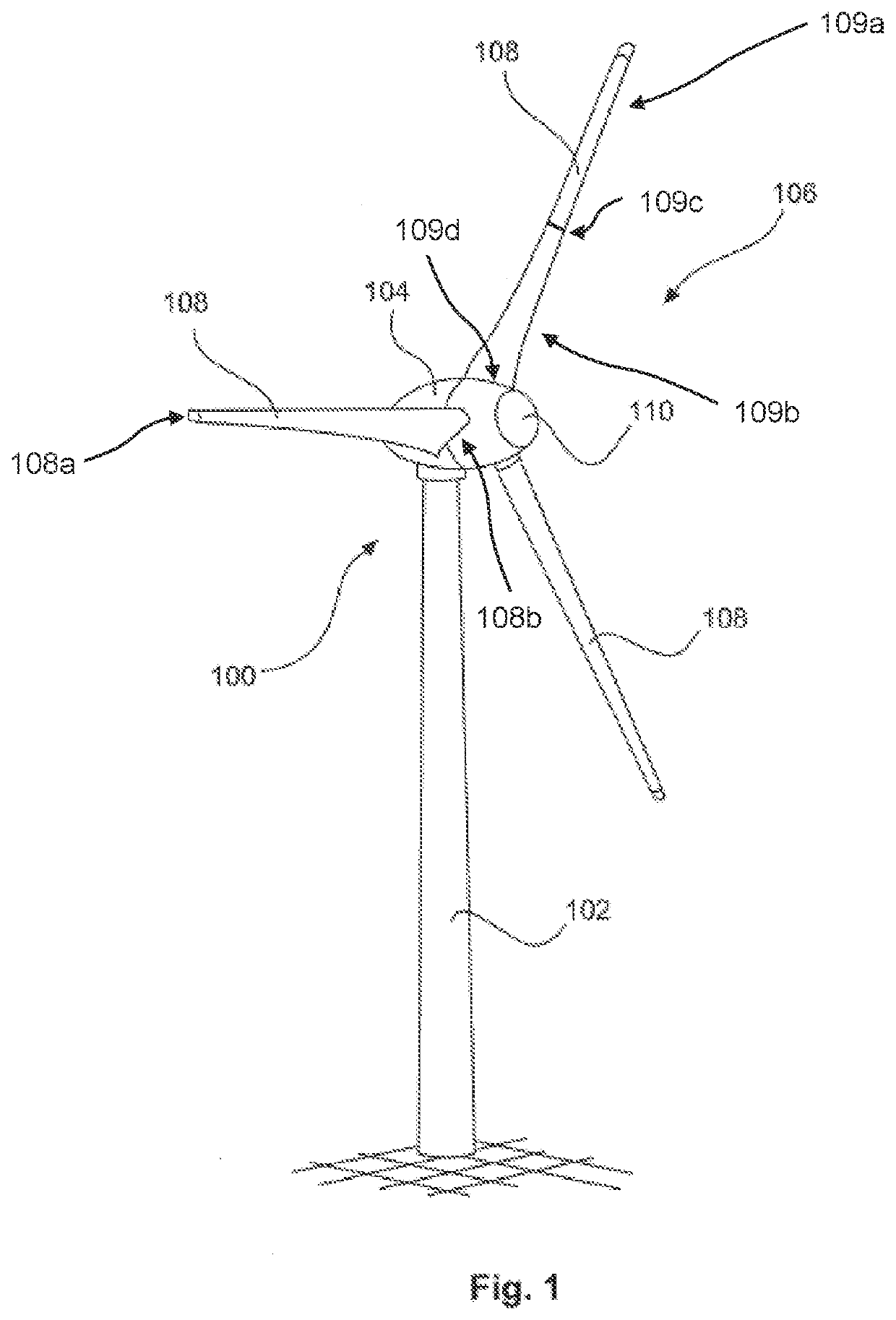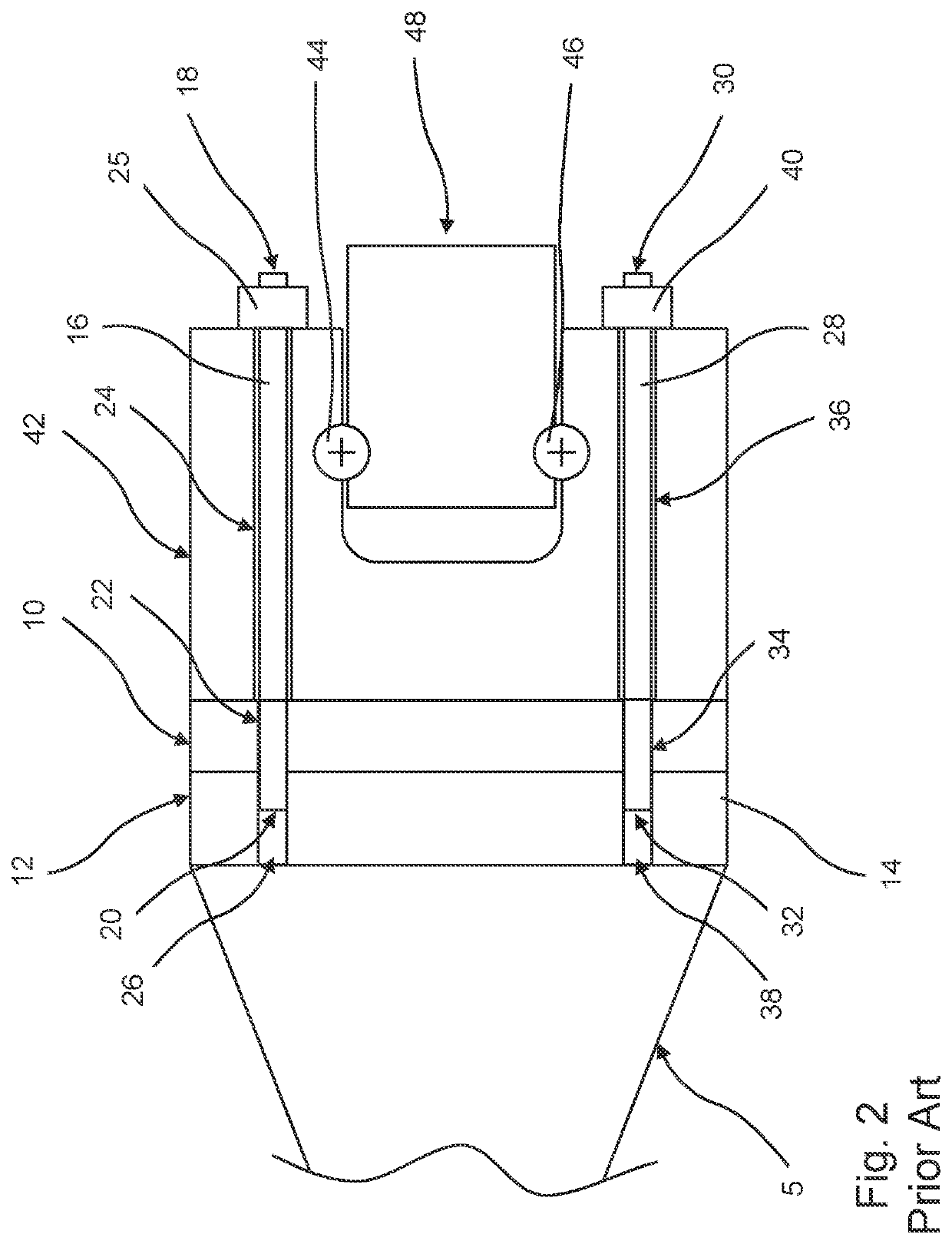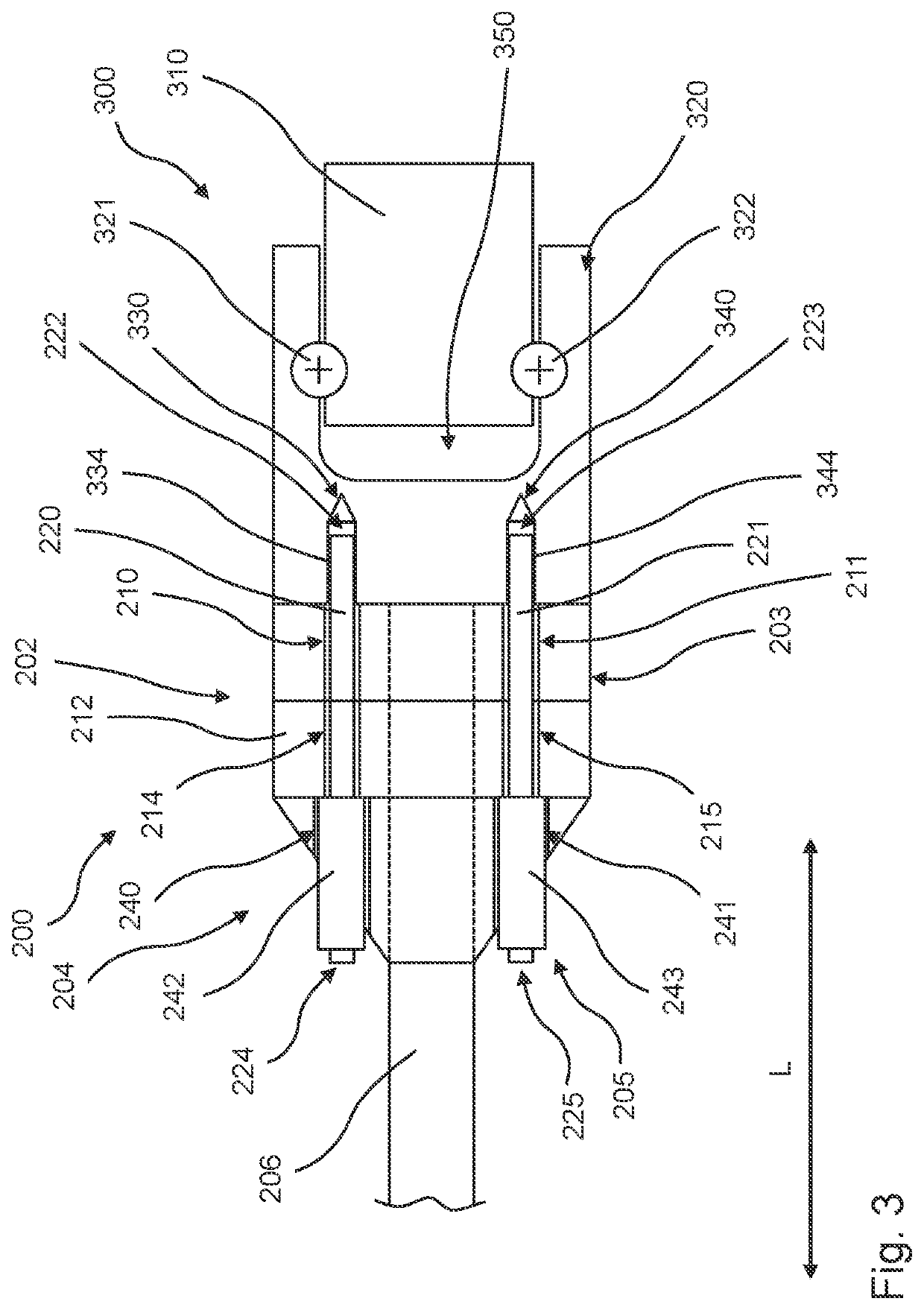Rotor for a wind turbine, and method
a technology for wind turbines and rotors, applied in the field of rotors for wind turbines, can solve the problems of high load at the connecting point between the rotor blade and the hub, damage to the wind turbine itself, and considerable further damage in the surrounding area of the wind turbine, so as to reduce or eliminate one or more, simplify the mounting of the rotor, and increase the effect of resource efficiency
- Summary
- Abstract
- Description
- Claims
- Application Information
AI Technical Summary
Benefits of technology
Problems solved by technology
Method used
Image
Examples
Embodiment Construction
[0067]FIG. 1 shows a schematic three-dimensional view of an exemplary embodiment of a wind turbine. FIG. 1 shows in particular a wind turbine 100 with a tower 102 and with a nacelle 104. A rotor 106 having three rotor blades 108 and having a spinner 110 is arranged on the nacelle 104. During operation, the rotor 106 is set in rotational motion by the wind and in this way drives a generator in the nacelle 104.
[0068]At least one of the rotor blades 108 of the rotor 106 extends from a blade tip 108a to a face side 108b, wherein the rotor blade 108 has a fastening region which is of tubular form and which is arranged adjoining the face side 108b, wherein the fastening region has at its outer circumferential surface and / or at its inner circumferential surface at least one thickened portion, wherein the at least one thickened portion is extended through by a longitudinal bolt cutout, in the form of a passage opening, with two opposite ends, wherein a first end of the longitudinal bolt cut...
PUM
 Login to View More
Login to View More Abstract
Description
Claims
Application Information
 Login to View More
Login to View More - R&D
- Intellectual Property
- Life Sciences
- Materials
- Tech Scout
- Unparalleled Data Quality
- Higher Quality Content
- 60% Fewer Hallucinations
Browse by: Latest US Patents, China's latest patents, Technical Efficacy Thesaurus, Application Domain, Technology Topic, Popular Technical Reports.
© 2025 PatSnap. All rights reserved.Legal|Privacy policy|Modern Slavery Act Transparency Statement|Sitemap|About US| Contact US: help@patsnap.com



